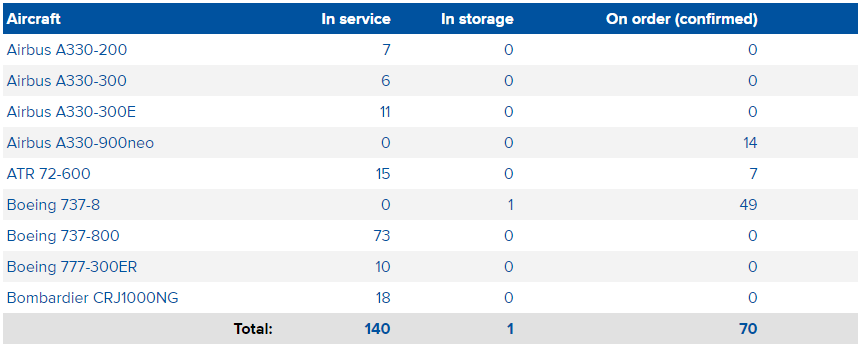Highlights:
- Garuda Indonesia is deploying all-economy A330s this summer on the Jakarta-Beijing, Jakarta-Hong Kong, Bali-Beijing and Bali-Shanghai routes;
- Garuda now uses widebody aircraft featuring lie flat business class seats in these markets;
- Corporates will be disappointed, particularly on Jakarta-Beijing and Jakarta-Hong Kong as these are relatively large business markets.
For over two months this summer all of Garuda's flights on the Jakarta-Beijing, Jakarta-Hong Kong, Bali-Beijing and Bali-Shanghai routes will operate with 360-seat all economy Airbus A330-300s. Garuda currently uses two-class A330-300s on Jakarta-Beijing, two-class 737-800s on Jakarta-Hong Kong, two-class 777-300ERs on Bali-Beijing and a mix of two class 777-300ERs and two class A330-200s on Bali-Shanghai.
Garuda also operates from Jakarta to Shanghai and from Bali to Hong Kong. These routes will continue to be operated - at least for now - with two class aircraft (mainly A330s).
The airline could potentially transition Jakarta-Shanghai and Bali-Hong Kong to all-economy A330s at a later date, while it could also make the all-economy A330-300s a permanent fixture on Jakarta-Beijing, Jakarta-Hong Kong, Bali-Beijing and Bali-Shanghai. For now, the all-economy flights are only scheduled to operate from early July to mid-September.
Garuda has operated six A330-300s in 360-seat all-economy configuration since 2014, when the aircraft were retrofitted. While all-economy widebody aircraft is very unusual for a full-service flag carrier retrofitting these six aircraft was sensible for Garuda as they have been used mainly on charter routes where there is no premium demand. They have mainly been deployed on flights from several Indonesian cities to Saudi Arabia, catering to religious pilgrims, and domestic trunk routes.
As Garuda offers several daily frequencies on trunk routes with two-class aircraft, offering a small number of all-economy flights does not significantly impact its premium offering. One of the all-economy A330s is also currently used to operate from Bali to two secondary Chinese cities - Xian and Zhengzhou. These are essentially scheduled charters as almost all the seats are block booked by Chinese agents, who sell packages in a price sensitive segment with no premium demand.
Beijing, Hong Kong and Shanghai are much different markets as there is significant business class demand - particularly for Jakarta. There is also upmarket leisure demand for Bali from these cities. Therefore, it is somewhat surprising Garuda is experimenting with an all-economy product in these markets.
The Indonesia flag carrier currently serves seven destinations in Greater China. Chengdu and Guangzhou are its other Chinese destinations and both are served from Bali with two class A330-300s; Guangzhou is also served from Jakarta with two class 737-800s. The two Bali routes are also potential candidates for all economy A330s if Garuda opts to expand its all economy fleet.
Garuda has recliner style business class seats on its 737-800s while all its widebody business class seats are fully lie-flat. It has 36 lie-flat business class seats on all its A330-200s and some of its two-class A330-300s, the remainder having a smaller business class cabin with 24 seats.
CHART: Garuda Indonesia's fleet includes 11 two class A330-300Es which are all relatively new while its six single-class A330-300s are much older (non-E) variants that were delivered in 1996 and 1997 Source: CAPA Fleet Database
Source: CAPA Fleet Database
The carrier also has lie flat business seats on its 777-300ERs. Eight of its 777-300ERs have 26 business class seats and two have 38 business class seats as well as eight first class seats. Garuda removed first class in six 777s as part of retrofit programme that was pursued after the A330 retrofits; it also opted to receive the last two 777s in the new two-class higher density configuration.
First class never made sense for Garuda and the airline will likely retrofit the remaining two three-class 777s. However, its lie-flat business product is in relatively high demand with Indonesian corporates. Not offering the product in some key business routes like Jakarta to Beijing and Hong Kong could backfire as corporate travellers switch to other airlines - particularly Air China and Cathay Pacific.